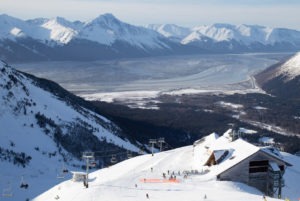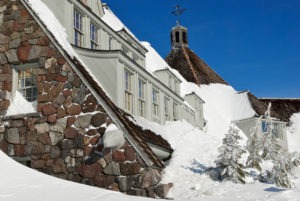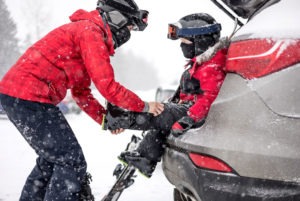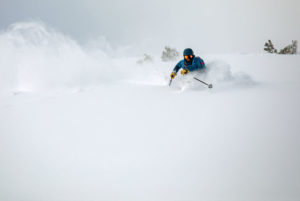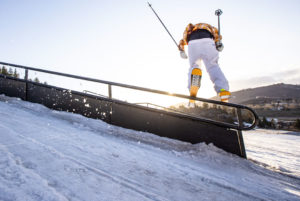Of course, falling is never something that you set out to do while skiing, but it’s bound to happen, whether you’re a ski pro or you’re just starting out. This is why it’s always important to be wearing a ski helmet along with any padding you need so that you feel comfortable and confident while you’re out. However, it’s also essential to know the proper ways to fall so that you don’t end up further injuring yourself and can spare yourself the embarrassment of a yard sale.
Are there right and wrong ways to fall on skis?
Yes! If you’ve ever participated in any other kind of sport where falling is an inevitable risk, such as ice skating, skateboarding, or bouldering, you know that there are certain techniques when it comes to falling in a way that will prevent the most injury. While it’s not always possible or within your control to fall the “proper” way, it is still helpful to know the best ways for falling on skis. If you’re new to skiing, you should learn how to fall on skis before you head out to the slopes.
Falling DO’s
There is not necessarily a “one size fits all” approach to falling on skis because there are so many different elements that need to be taken into consideration, such as terrain, whether or not you’re skiing off jumps, etc. However, there are still a few basic tips that are good to keep in mind along with a few falling techniques.
- DO keep your muscles relaxed. It’s easy to naturally tense up your muscles as you start to fall but try to the best of your ability to keep everything loose. Relaxed muscles will help prevent you from getting any further injuries from falling.
- DO keep your skis on the ground. If your legs flail in the air while you fall, your skis will as well (assuming your boots are still attached to your bindings). If your skis are in the air while you fall, you will risk them landing on your legs or hitting other parts of your body. Therefore, it’s important to keep your feet and skis on the ground to the best of your ability!
- DO roll into your fall when you can. This won’t always work, but when you can, try to roll into your fall. This will help lower your chances of any serious ski injuries.
In addition to these tips for falling on skis, here are a few specific ways or forms of falling:
- Side Fall
This one is probably the easiest and least likely to result in a ski injury. As you let
yourself fall onto your side, keep your legs straight and outstretched. Also keep your arm straight and don’t attempt to catch yourself with your elbow or hand.
- Front Fall
Front falling is a little scarier, but there is a way to do it safely! First, remember
to never put your hands out to catch a front fall. Instead, use your entire forearm (not just your hands or elbows) to catch yourself and avoid smashing your face into the snow.
- Back Fall
When it comes to falling on your back, you’ll want to make sure that you are protecting your head. If you feel yourself falling backwards, try to go butt first and roll onto your back to avoid slamming your back or head onto the ground. While you’re going down, keep both arms out to your side. Don’t attempt to catch yourself with them as this will likely result in getting something dislocated.
Falling DON’TS
Now that you know how to fall on skis, it’s a good idea to go over a few ways that you should NOT fall!
- DON’T catch yourself with your hand or elbow. A lot of times, we will naturally put out our hands to catch our fall, this is one of the most common injury circumstances that happen on the mountain. This applies to snowboarders as well.
- DON’T dig in your ski’s edges. It may be tempting when you feel yourself going down but digging in your edges can make your skis catch which may result in your fall being more severe, forceful, or abrupt.
- DON’T neglect your helmet. It’s worth mentioning again how important it is to wear a helmet while you’re on the slopes. While it may be tempting to leave it behind, especially if you’re out with people who aren’t wearing one, remember that a helmet can greatly reduce your ski injury.
Preventing Falls
Even though falling is sometimes inevitable, remember that there are a few things you can do to prevent it or at least reduce your risk of a serious ski injury from your fall. Keep these things in mind before heading out:
- Don’t ski while you’re fatigued or feeling ill.
- Don’t venture too far out of your comfort zone, and ski on terrain you’re comfortable with.
- Brush up on proper steering and stopping techniques if you haven’t been skiing in a while.
- Don’t ski on an empty stomach or while you’re too full. Eat a small but balanced meal before going out and stay hydrated.
- Stop when you feel tired. Don’t keep pushing yourself, even if it’s tempting!
Fall with confidence this ski season! Although falling isn’t fun, we hope some of these ski techniques will help you the next time you’re out on the slopes as well as the tips to avoid falling in the first place! And don’t forget to make sure you’re skiing with the proper gear to make sure you’re not putting yourself at further risk of falling or severe ski injuries.
Swing by our ski shop to browse everything from skis to snow goggles so that you will have all you need to make this ski season the best yet!




